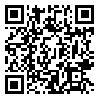BibTeX | RIS | EndNote | Medlars | ProCite | Reference Manager | RefWorks
Send citation to:
URL: http://jra-tabriziau.ir/article-1-458-en.html
2- School of Architecture, College of Fine arts, University of Tehran, Tehran, Iran ,
A significant portion of Iran's architectural heritage, spanning from pre-Islamic times to the contemporary period, includes ancient sites, historical urban and rural textures, and valuable individual buildings made of brick and mud. Due to the vulnerable nature of these materials, there is an increasing need for protection, restoration, maintenance, and reinforcement against damaging factors as time progresses and technology advances. On the other hand, the historical Morchekhort Castle, one of the most significant adobe structures in Isfahan, is currently abandoned and uninhabited due to uncertainties regarding its habitation and preservation. Therefore, this research aims to enhance the functional capabilities of materials by making the clay structure of Morchekhort Castle resistant to moisture using modern techniques. It seeks to answer the question: What new techniques are most effective in improving the functional capabilities of materials for reinforcing clay structures against moisture? This research is applied in terms of its purpose, focusing on evaluating new techniques for strengthening clay structures against humidity. The method of collecting information involves fieldwork, library research, and laboratory data analysis. As a result of this research, both modern and traditional techniques have been evaluated to improve the quality of materials. Among the samples produced using modern techniques, code D, which consists of a combination of soil, straw (base adobe), and a synthetic emulsion solution, demonstrated the highest percentage of resistance in the compressive strength test and the lowest percentage of moisture absorption compared to the original adobe. Given its low weight of approximately 0.818 kilograms with dimensions of 10 x 10 x 5 cm, this produced sample can also be more resistant to earthquakes and structural vibrations than the original brick of the same dimensions, which weighs approximately 1,500 kilograms.
Received: 2025/03/23 | Accepted: 2025/09/11 | Published: 2025/09/21 | ePublished: 2025/09/21
| Rights and permissions | |
 |
This work is licensed under a Creative Commons Attribution-NonCommercial 4.0 International License. |






